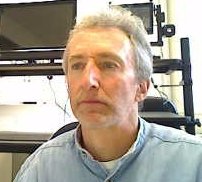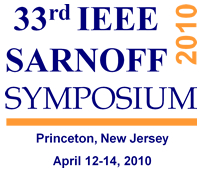Lawrence O'Gorman
Alcatel-Lucent Bell Labs
Murray Hill, NJ USA
From Digital Libraries to Biometrics to Telepresence: What Makes New Technologies Succeed?
Tuesday, April 13, 2010
Abstract
This talk combines a retrospective of past technologies and a look forward to a new one, with the objective of identifying common factors in the path from research to success. All work described in this talk involves multimedia signal processing and security.
Our retrospective begins with digital libraries. In the early days of the World Wide Web, content providers were reluctant to publish electronically for fear of theft of material, so technologists provided watermarking. How has this worked out for the content owners, the watermark technologists, and the speed of adoption of digital libraries? We next examine an anti-counterfeiting technology combining image processing with the then new technology of public key cryptography. This combination was innovative, but was it successful? Finally, we examine biometrics. How were early hurdles overcome leading to biometrics’ surge in research activity and global adoption?
With knowledge of these past successes and challenges, we examine current work in telepresence. Why, 46 years after AT&T's introduction of the Picturephone, do most of us still travel rather than meet via video conference? Although many people might propose that bandwidth and network issues are still the problem, we suggest a more user-centric challenge, video privacy. If that is so, how can we overcome this to achieve telepresence success?
Biography
:
Lawrence O'Gorman is a Distinguished Member of Technical Staff at Alcatel-Lucent Bell Labs, as well as an Adjunct Professor in the Computer Science Department at the Polytechnic Institute of New York University.
At Bell Labs, he works in the area of multimedia signal processing, including video, image, audio, and other sensors. He teaches on the topic of signal security, which includes biometrics, watermarking, telephony, etc. Previous to Bell Labs, Dr. O'Gorman worked at Avaya Labs Research on signal and system security, signal processing, and multi-media systems. Before this he was Chief Scientist and co-founder of Veridicom, Inc., a developer of personal fingerprint authentication systems. Prior to this he was at Bell Labs under the parent coroporations of AT&T and Lucent Technologies.
He has written over 70 technical papers, eight book chapters, holds 15 patents, and is co-author of the books, "Practical Algorithms for Image Analysis" published by Cambridge University Press, and "Document Image Processing" published by IEEE Press. He is a Fellow of the IEEE and of the International Association for Pattern Recognition. In 1996, he won the Best Industrial Paper Award at the International Conference for Pattern Recognition and an R&D 100 Award for one of "the top 100 innovative technologies of that year." He is (or has been) on the Editorial Boards of four journals (including IEEE Pattern Analysis and Machine Intelligence, and Pattern Recognition), and a member of several technical committees. He has served on US government panels to NIST, NSF, and NAE, and to France's INRIA.
He received the B.A.Sc., M.S., and Ph.D. degrees in electrical and computer engineering from the University of Ottawa, University of Washington, and Carnegie Mellon University respectively.
|








